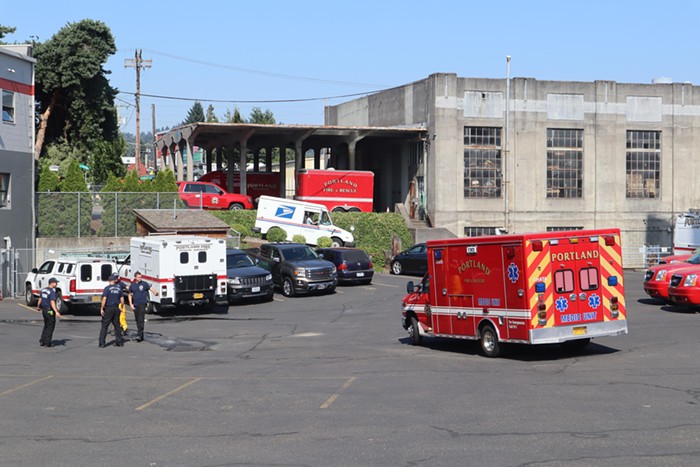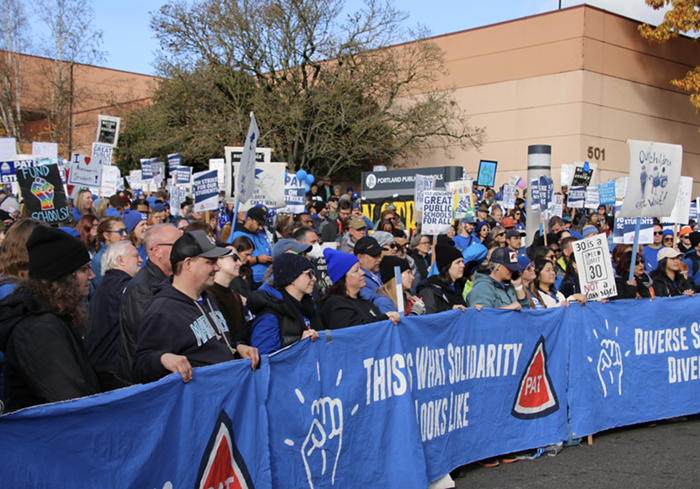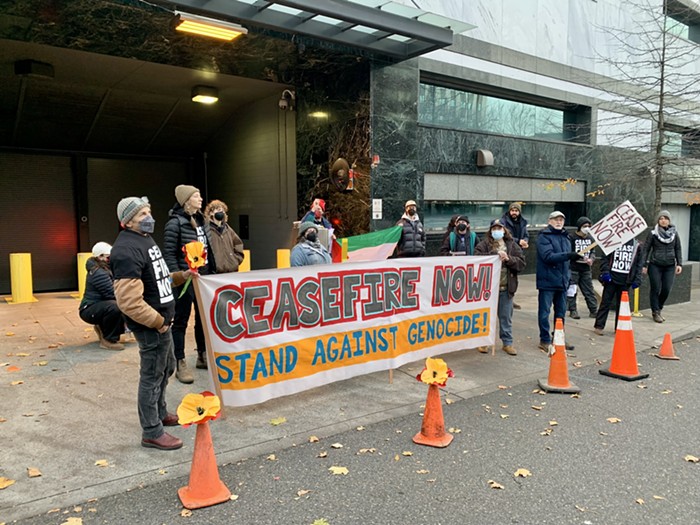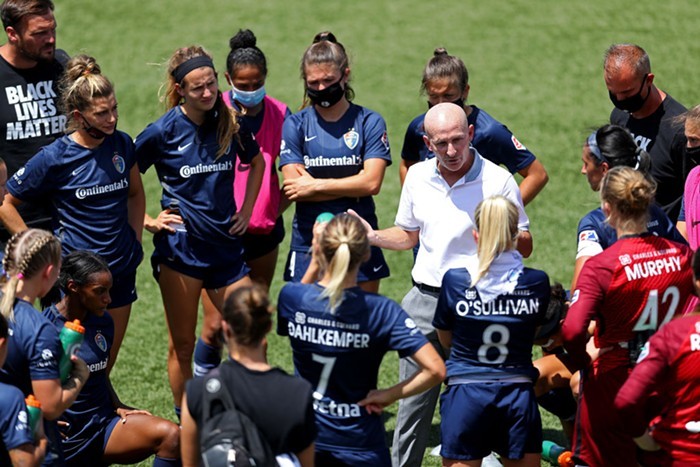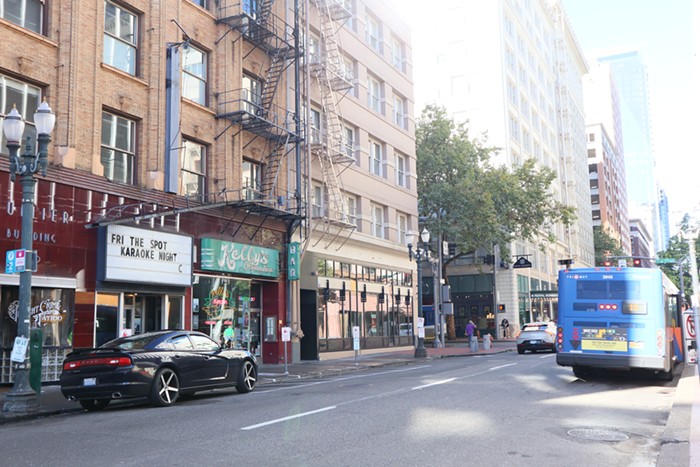AS COP NIGHTMARES GO, this one was looking bad.
On Sunday morning, a reportedly suicidal man had fired through his front door at three police officers, lightly injuring two of the men. And now he had a rifle and was firing at still more cops moving uphill toward his Southeast duplex through wide-open Brooklyn Park.
One of those responding officers, Parik Singh, was hit in the stomach. It was a difficult shot. The bullet traveled dozens of yards at a tough angle, from the shooter's window on SE 10th, through an empty playground and then to where Singh was trying to huddle behind a large tree.
That meant the shooter either had fantastic aim or a scope. And he could easily fire at the officers trying to rescue their injured colleague. Or, beyond them, at a strip along busy SE Milwaukie, where people were sipping coffee and shopping.
Two officers returned fire. Davonne Zentner fired right after Singh was shot, and then, as three other cops hustled Singh to safety, Justin Clary took up his rifle and fired at the shooter's concrete garage.
But then? "It got deathly silent," said Tim Smith, a worker at Chantiques, a furniture store across from the park, who watched the episode unfold while ducking for safety.
By then Sergeant Troy King of the bureau's Hostage Negotiation Team—called in along with the bureau's SWAT-like Special Emergency Reaction Team (SERT)—had finally reached the shooter by phone. And at 10:34 am, a little over an hour after police first knocked on 61-year-old Ralph Clyde Turner's door, King persuaded Turner to come outside and surrender.
"If you can get the person on the phone, talking to you, that means they're not doing something else, like shooting at somebody," says Sergeant Pete Simpson, a police spokesman. . "It buys time for officers. And time gives you options. It stops everything and allows us all to calm down."
No more shots were fired. Singh was rushed to Legacy Emanuel Hospital, where he remained in serious condition on Tuesday, March 8. Turner was taken to Multnomah County jail and arraigned on 10 counts of attempted aggravated murder and other charges Monday, March 7.
And, significantly, he also avoided becoming the seventh man gunned down by cops since January 2010.
Simpson said the system worked exactly as it should, despite the obvious emotions at play: A trained, dedicated negotiator did his job quickly—experts say standoffs typically last four hours—and kept communicating with SERT officers waiting outside.
"The important part is communicating the information to officers who have their eyes on the scene so they know what's happening," Simpson says. "That way they're not surprised."
All too often, however, that routine seems like a luxury. In cases when someone with a weapon has raced toward a cop, or when someone holed up has refused to talk and continues to fire away, officers say they have no choice but to shoot to kill.
Last November, Craig Boehler was shot by a police sniper after a late-night scuffle with his family led to a standoff that saw him barricading windows and taunting officers and peppering them with gunfire. In December, Darryel Dwayne Ferguson was shot dead immediately after waving an air-pistol replica handgun at two officers who had knocked on his door. Later that month, police shot, but did not kill, a mentally ill man named Marcus Lagozzino, who rushed at officers with a machete. And then, in January, homeless man Tom Higginbotham was shot in an abandoned carwash after coming at two officers with a kitchen knife.
But even when the routine is in place, things have gone awry. As effective as a negotiator might be, actually arresting a suspect requires its own brand of patience. And the handling of Turner's arrest makes some of the bureau's past missteps even more glaring.
In last January's fatal standoff with Aaron Campbell, SERT officers weren't called. And the presiding sergeants, John Birkinbine and Liani Reyna, failed to share that Campbell had been on the phone with a negotiator when he agreed to leave his apartment.
Campbell, when he emerged, was beanbagged by Officer Ryan Lewton, who wanted Campbell's hands on top his head, not behind it. Campbell flinched, and then Officer Ron Frashour, who testified he thought Campbell was reaching for a gun, shot him in the back. Frashour was fired last fall, the other officers were suspended.
On Sunday, SERT officers were present, Simpson said, and communication was continuous. Simpson also said negotiators can't control how suspects (although Campbell wasn't charged with a crime) will act once they're outside.
Not that fatal mistakes haven't happened when SERT officers were present. In November 2005, a negotiator was actually on the phone with Raymond Gwerder, despondent and holding a handgun, when SERT sniper Leo Besner shot Gwerder in the back. Besner said he thought Gwerder was a threat to neighbors.
The city was forced to pay $500,000 in a civil settlement, while Besner was promoted last year to sergeant.
Asked if Sunday's outcome reflected any lessons learned from the Campbell and Gwerder deaths, Simpson said patrol officers aren't trained as rigorously as SERT members and dedicated negotiators, but that the bureau's trainers are always "looking at what the training lessons are." He also said officers "do an excellent job at this daily. Often it doesn't rise to this level, where you have people who are shot."
Joe Key, a retired Baltimore officer who has testified in hundreds of use-of-force cases, for both plaintiffs and cops, said a tactical assault would've been justified Sunday.
"That they didn't shows a lot of control," he says. "And you've got an effective negotiator. He's up against it trying to convince a guy who shot a cop that it's okay to come out."

